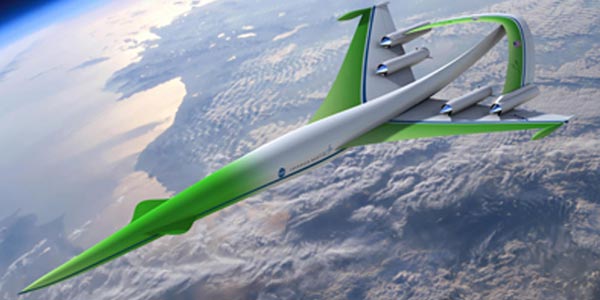 |
| Lockheed Martin's Futuristic 'Green Machine' |
The report – “Aero 2075: Flying into a bright future?” – said that even in the next 20 years, the UK could tap into potential sales of 25,000 new aircraft, set to be worth more than £2 trillion ($3 trillion). But UK R&D funding in the aerospace sector is at a “historic low,” the report added.
Philippa Oldham, Institution of Mechanical Engineers’ head of transport told TERMINAL U: “Aerospace manufacturers have suffered in the current [economic] climate due to budget cuts. But the UK needs to remain competitive, particularly as the BRIC countries, such as China, India and Russia have big [aerospace] development programmes.
“The UK has expertise in manufacturing aircraft engines, wings and landing gears, for example and we need to keep reinvesting to stay competitive.”
The IMechE is calling for a new dedicated research body and a vision for UK aerospace.
The future of flying – by 2075
The IMechE said the UK has expertise that could pave the way to planes flying in a V-formation in future, which it added could cut an airline’s fuel bill by up to 12 percent. In theory, formation flying is more efficient, by taking advantage of the airflow generated by the plane in front.Planes would be equipped with remote sensing equipment to control the distance between them. The technology assumes that planes will be flying without a human pilot in the cockpit. Advances in automation technology has led to discussion on whether passenger jets in future could fly without pilots.
While the technology is already proven in the military market through the use of unmanned aerial vehicles (drones), the aerospace industry is aware that the issues around using an unmanned military plane with information gathering equipment are different from flying an unpiloted aircraft full of passengers.
“The UK is undertaking a lot of research programmes and trials in how this automation works and to make the software as safe for commercial air travel as possible,” Oldham said. “The main issue is people’s confidence if they knew they didn’t have a pilot on board.”
Hypersonic technologies that could enable passengers to travel at more than five times the speed of sound are also in development and require huge funding to move the concepts off the drawing board. The IMechE believes that further advances in space technology could form the basis for hypersonic commercial passenger travel.
The scramjet-powered space plane has moved to testing stage and could in future launch passengers straight from the ground into space – so-called, single stage to orbit, the IMechE report said. If you can’t wait that long, there’s always the option of a seat on Virgin Galactic’s edge-of-space flights, if you can stump up US$200,000 (£125,500) for the trip.
And while the dream of next-generation supersonic travel is still alive and well, a major challenge to developing a modern day version of Concorde lies in achieving low levels of supersonic boom overland. Defence firm, Lockheed Martin’s concept, Green Machine is designed to reduce the effects of sonic boom, with an inverted-V engine.
Designing passenger jets of the future that are more efficient and produce less noise remain key goals for the industry. Planes with a blended wing design – where its fuselage, wings and engine are blended together – has been a discussion point for many years.
The IMechE’s Oldham said: “The question is: how do you change the aircraft? It’s a risk for aircraft manufacturers to take, as this concept is so far removed from the standard ‘cigar tube and wing design’.”
The Dreamliner – which is made mostly of composites to make it more efficient and lightweight – “is all progress towards improving the airframe itself,” she added.
Airplane manufacturers are taking steps to develop greener aircraft, and solar-powered technology is being explored to power commercial flights. While it is very unlikely that solar or hydrogen fuel cells alone will provide enough energy to fuel a passenger plane, researchers are exploring the opportunities for on-board electrical generation from renewable sources.
Where do we go from here?
Before we all get excited (or nervous) at the prospect of hypersonic travel and pilotless planes, there are still many boundaries to overcome - and funding for R&D is not the only major issue. The switch to more radical plane designs will only occur when the airline industry can see the risk reduced in taking such a step change, the IMechE said in its report.There are also long production cycles for new aircraft. The first passenger carbon-composite jet – the Dreamliner – will enter passenger service for the first time on Wednesday, but much has been made of its production delays, trailing back more than three and a half years.
To turn research into reality, there needs to be a clear vision, supported by the government, the IMechE’s Philippa Oldham said: “We [the UK] don’t have a clear vision of where we want our aerospace sector to go. What do we want? Speed to travel? To travel more into space? To just transport more people? Or focus on more [aircraft] noise reductions and fuel savings?"
“There are so many unanswered questions and so many opportunities to look into this but we need the strategic vision to do that. Aircraft engines are always improving, noise reduction is happening; it’s what that next step is.”












0 comments:
Post a Comment